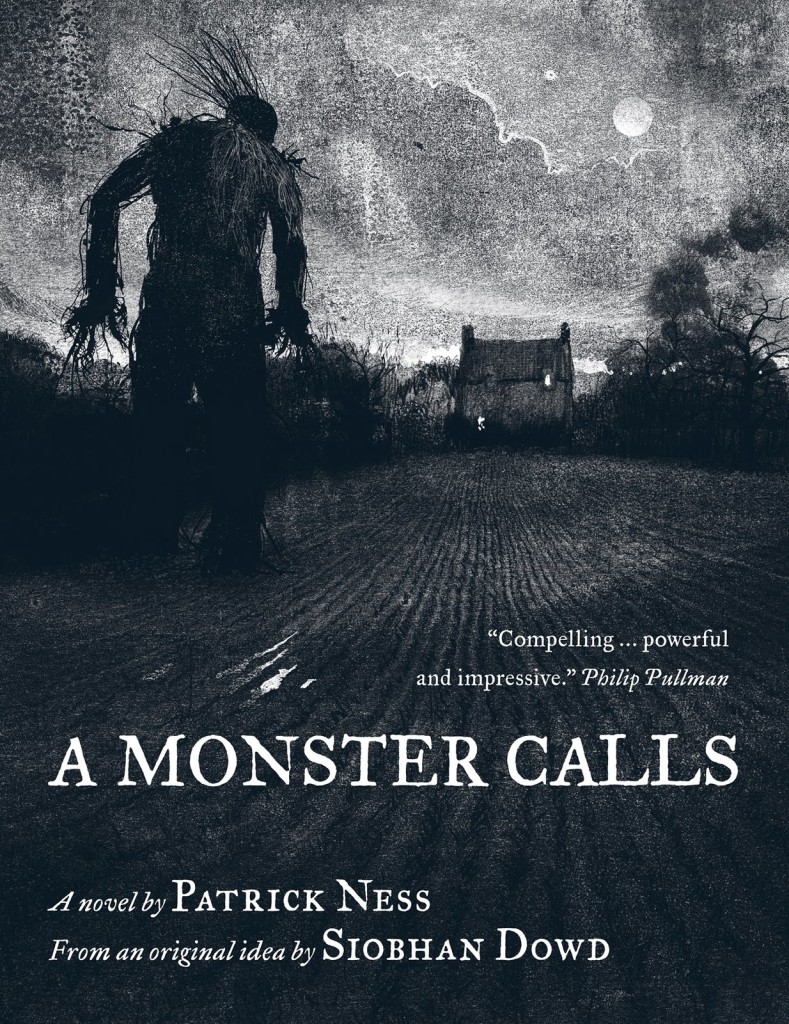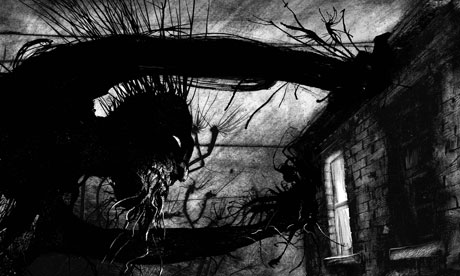Genre: Drama/Supernatural/Children’s
Premise: An adolescent boy with a terminally ill single mother begins having visions of a tree monster, who tells him the truths about life in the form of three stories, helping him to eventually cope with his emotions over his dying mom.
About: This one finished Top 5 on the 2013 Black List. Patrick Ness adapted from his own children’s book. This one has an interesting backstory in that another author, Siobhan Dowd, came up with the idea and was set to write it, but died in 2007. Later, an editor (who worked with both Dowd and Ness) gave the idea to Ness. Just this past month, Liam Neeson signed on to play the big scary tree monster.
Writer: Patrick Ness (based on an idea from Siobhan Dowd)
Details: 105 pages (July 6th, 2012 draft)
So I was sitting there thinking, well, I ended up liking that dying teenagers script, The Fault In Our Stars. Maybe this is a sign of things to come. Maybe cancer scripts are my new thing! I mean, the way these things are coming on, they’re going to be rivaling comic book movies soon. Maybe that’s why Edgar Wright really dropped off Ant-Man. He wanted to make a Cancer Trilogy. Cancer… Ninjas?
As always, the trick with these scripts is to avoid the melodrama traps. If you’re set on making people cry, you’re probably not going to make them cry. Real life isn’t people hugging and saying goodbye on death beds unless you’ve earned it. Unless you’ve built up a story with a lot of complex emotions that are many times the exact opposite of death and sadness. This is something A Monster Calls does quite well.
The script is about a 12 year-old kid named Conor whose mother is dying of cancer. Remember folks, when you’re setting something like this up, don’t go for the obvious “mom in bed dying shot” to establish the cancer. Here, Ness wisely shows Conor getting ready for school. He cooks, he cleans. He does all the things a parent is supposed to do. So when you see him doing it, you know something’s off. Therefore, when his mom appears at the top of the stairs, weak and sick, we know exactly what’s going on.
So one night, Patrick’s trying to sleep when this huge thousand year-old scary tree in his backyard comes to life. The tree informs Conor that he’s going to tell him three stories that are going to change his life.
The structure of the script, then, cuts between three places. Either Conor with his family, Conor at school, or the tree telling him a story. In the first story, the tree tells the tale of a prince who kills his future bride in order to save his kingdom. It’s a confusing story because Conor’s not sure who’s right in the scenario. Is it right to kill someone to save others? Or isn’t everyone who kills wrong no matter what? The tree can’t answer that question for him. He has to figure it out himself.
This segues into a second story about a chemist who could’ve saved his neighbors’ lives but chose not to out of spite. And the final story is about an invisible man who wants to be seen. All three stories do not have the traditional “happy clear” ending that fairy tales have, and this frustrates Conor to no end.
(spoiler) As Conor finally comes to the realization that his mom is not going to get better, he realizes that the complex feelings he’s been experiencing (which include wishing his mom would die), aren’t that different from the complex tales the tree has been telling him. The moral here is that there is no black and white in life. We are instead drowning in grey.
A Monster Calls is quite good, if a little sad.
What stands out most about it is exactly the theme it trumpets – that we live in a morally complex world. As screenwriters, you’ve been told to explore the grey areas of your characters and your story, and A Monster Calls does so on almost every page.
As I stated about the tree’s first tale, the story actually ends with the tree helping the prince who killed his own fiancée! And the tree tells Conor this is perfectly fine! In order to save many, you sometimes have to get rid of one. I give it to Ness for throwing a seriously complex question out there, but how parents are going to explain this to their children, I have no idea.
I also enjoyed how Ness would do the unexpected. For example, this huge monster tree squeezes into Conor’s window in the opening. But he just sits there unimpressed. He’s not scared, not for a second. Can’t remember seeing a kid react like that before. Or the bully who bullies Conor – he doesn’t always attack. Sometimes he just stares at Conor or walks away. Or when Conor throws his best friend under the bus, he suffers no consequences for it. “A Monster Calls” often avoids the easy choice, which I loved.
Where A Monster Calls really excelled, though, was in its relationships. Remember what I’ve told you guys: You want 2 or 3 key relationships in your script that contain some sort of unresolved issue. If you get this right, you should have your reader zipping through the pages to get to the end, because as viewers, we’re not satisfied until we see people’s problems resolved. And the more unresolved problems there are, the more resolving we get to look forward to.
A Monster Calls created SIX unresolved relationships. Here they are…
1) Conor and the Tree – What are all these stories about and what do they have to do with him?
2) Conor and Lily – Conor’s old friend whom he broke up with.
3) Conor and the bully – A bully who keeps picking on Conor at school.
4) Conor and his Grandmother – He’s never liked his Grandmother and now he’s probably going to have to live with her.
5) Conor and his dad – His father has moved on to another family in America and they barely ever see each other.
6) Conor and his mom – His mom is dying, and it’s killing Conor every day.
This is something all of you should be doing. Identify an issue between your main character and each of the other main characters and use the duration of your screenplay to resolve that issue.
Despite this being really solid, there was something missing that I couldn’t put my finger on. I think I was looking for Tree Monster’s stories to connect with the cancer storyline better. How exactly does the prince killing his fiancée help Conor let his mom go? I’m still not sure. It was one of those deals where you go, “Ehhh, yeah, that SORTA works,” but it doesn’t work in that ‘hit you in the gut’ way. And when you’re talking about a subject matter this intense, I think we’re expecting to be hit in the gut, to experience that magical rare story moment where everything you’ve been reading all comes together at once. I’m sad to say that didn’t quite happen here.
One thing’s for sure though. This will be an interesting one to watch. It might be too dark for the average kid. But the emotional component is there in spades, which should draw in the adults. It reminds me a little bit of The Iron Giant in that respect. But this is darker than that. I don’t know. We’ll see. But regardless, A Monster Calls is definitely worth checking out.
[ ] what the hell did I just read?
[ ] wasn’t for me
[x] worth the read
[ ] impressive
[ ] genius
What I learned: I used to think cramming five or more unresolved relationships into a script was too much. That there wasn’t enough time to adequately explore all those relationships in an emotionally satisfying way. But this taught me you can explore more relationships as long as you keep some really short. Like the father in this script comes in for only three scenes (he flies in from another country). But those scenes are still very powerful because Conor and his father have such a huge disconnect.



